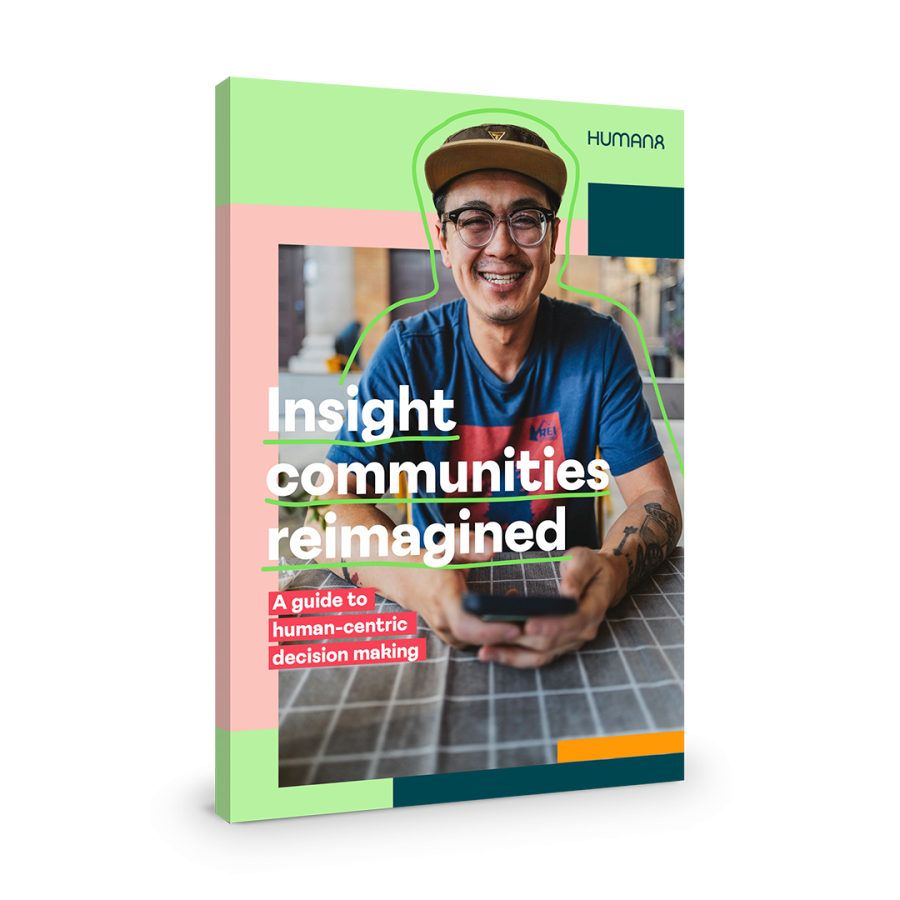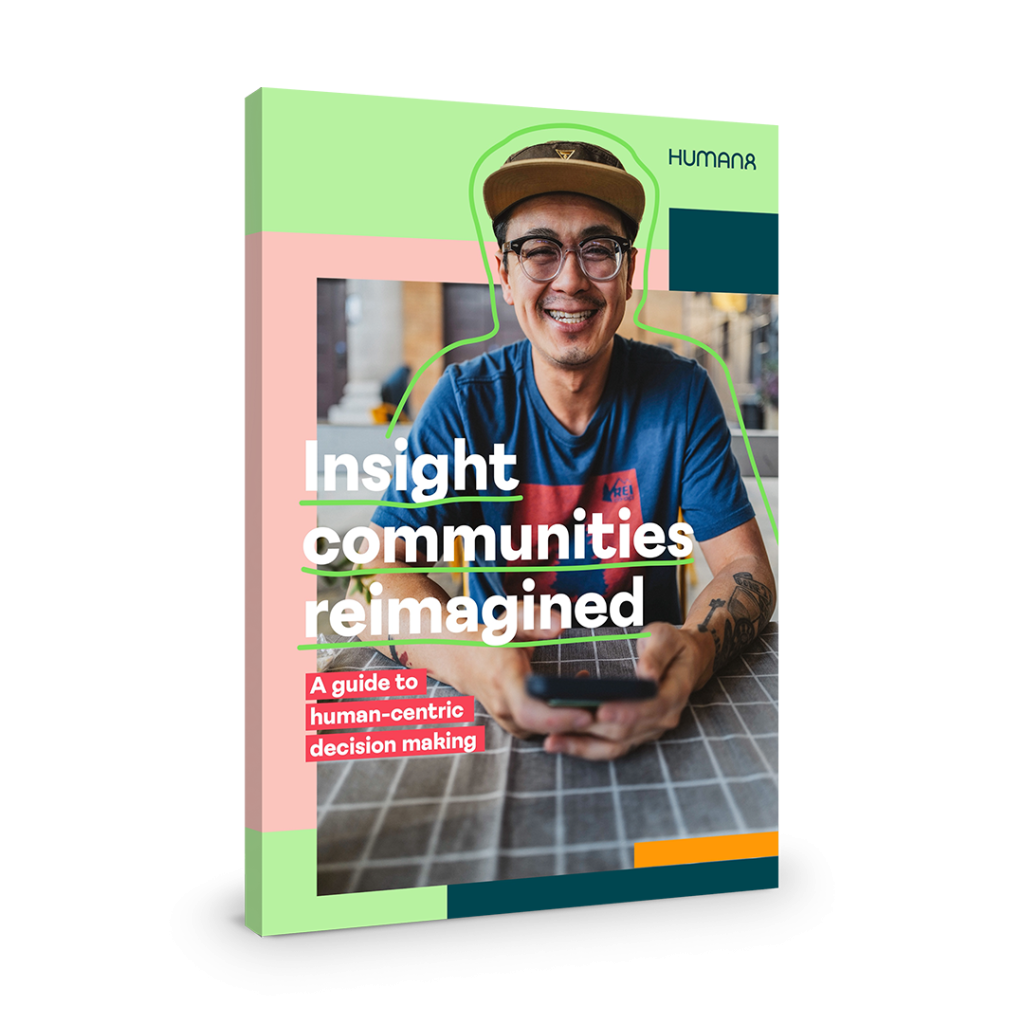Blog
Five myths about online communities
Break free from common myths about online insight communities that might be stopping your organisation from unlocking human-centred insights.


Mark Graham
01 August 2024
4 min read
When I first stepped into the world of market research (and let’s not be too specific when that was), online insight communities were a fresh and revolutionary idea. I recall simpler times when clients were absolutely blown away by the idea of always-on access to consumers simply by turning on a computer and logging onto a site on the World Wide Web.
Fast forward to today. Insight communities have become a staple of many leading brands’ research and strategy programs. As such, many insights and market research professionals have either had direct experience working with communities or are at least familiar with what they are. As online insight communities have gone mainstream, opinions about them have multiplied. Some are fair; others miss the mark entirely. While insight communities aren’t the perfect solution for every challenge, there is much value to be gained when it is the right fit for you. In this blog, I’ll tackle some of the most common myths we hear about insight communities and reveal the truth. So, buckle up – it’s time for some myth-busting!
Myth #1: Insight communities are only good for fast feedback
This is one of the most common misconceptions we hear. While speed is an advantage of online insight communities, it certainly isn’t the only one.
Insight communities are a powerful and easy way to build empathy with consumers and learn how your target market thinks, feels and lives their lives. Always-on access to consumers provides multiple ways to better understand them and ‘walk a mile’ in their shoes. Take our Consumer Connect programme for Haleon, which brings consumer stories to life, or our work with Anheuser-Busch, where communities fuelled a dynamic innovation trajectory. From designing premium customer experiences to creating products that truly meet people’s needs, the possibilities are endless.
Myth #2: Insight communities only collect input from your most vocal consumers
Not if you’re monitoring and resourcing it correctly.
The first way to combat this is through periodic member refreshments, which should be a standard part of every community engagement. This is a process where we bring a new group of people into the community that fit your target audience profile while politely shifting others out of the community. This process ensures you are getting new voices and perspectives into your research program and not relying on the same set of consumers.
The next important piece is moderation. Every insight community should have a dedicated moderator (or set of moderators) that engage consumers, keep them energised and create a safe environment to share and be respectful. This ensures that everyone is being heard – and not just the loudest voices.
And the last component is cultural context. It is important that moderators not only speak the local language, but also understand the other cultural aspects of their country or region. With their knowledge of the local market situation and business context, they can easily identify with consumers’ values, beliefs and traditions. This ensures that we not only listen to what is said but also comprehend it in the context of consumers’ lived experiences.
Myth #3: Insight communities are only suitable for simple methodologies
Far from it. This a two-for-one myth, because we hear it regarding both qualitative and quantitative community inquiries.
So let me start with the qualitative part. There is still a perception from some that insight communities are a fancy word for discussion boards (simple text-based forums). This is not true. Sure, discussion boards are a key piece (and often a powerful one) of the community offering, but modern insight communities have many more ways to capture deep qualitative feedback that include photo sharing, journaling, video and chat functionality.
And when it comes to quantitative, many still equate insight communities with a simple online survey program. But there’s more that can be done. You can use tools that give you in-depth, granular feedback on a static image, a block of copy or video stimuli. If your community sample is high enough, you can use technical quantitative methodologies such as MaxDiff, TURF, Von Westendorp, etc. And depending on your needs, you can even temporarily bring in more members into your community to get a large sample size when robust numbers are needed for a quant exercise.
Our insight communities offer a range of ‘think, feel, do activities’, that include projective techniques, online shopping simulations and ones that that tap into system 1 thinking (e.g., the brain’s fast, automatic and emotional response to stimuli). These off-the-shelf tools make it easy to elevate your community research and get to your objectives in new and exciting ways.
Myth #4: Insight communities are only applicable for consumer research
Fake news.
While it is true that the bulk of community engagements are for consumer research, some of the most successful (and rewarding) engagements I’ve seen have been when organisations create employee or stakeholder communities within their own walls.
Employee communities can be deployed to keep a pulse on employee morale, test communications and build employee engagement programs. And professional communities – with salespeople, human resource professionals, bankers, etc. – are a great way for service companies to ensure they’re getting valuable feedback from their critical frontline employee.
Myth #5: Insight communities are expensive
But they don’t have to be.
If your research objectives are qualitative in nature, your community size can be small, which can save costs. Providing a sample list for your community can also decrease recruitment fees. Setting up a three- or six-month community is another way to manage costs or pilot a new community efficiently, compared to a one-year commitment.
At the end of the day, insight communities have gotten unfairly ‘dinged’ in recent years as being limited, cost-prohibitive and frankly, unsexy. But, in reality, that’s simply not the case. At their core, insight communities are about people – understanding them, learning from them, and making decisions that matter. Hopefully, this myth-busting exercise has shown how versatile and valuable these communities can be when tailored to your needs based on your audience, research objectives and budget.
EBOOK
Insight communities reimagined
A practical guide to human-centric decision making.
Request your free copyLet’s connect

